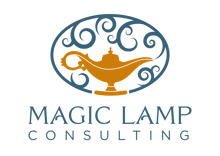Nonprofits are driven by mission, vision, and the desire to create meaningful change. Yet, without...
10 Key Steps to Create Effective Nonprofit Programs

Creating effective nonprofit programs involves a strategic process that ensures the programs align with the mission, meet community needs, and achieve measurable outcomes. This process requires a deep understanding of the organization's core mission and a commitment to addressing the specific challenges faced by the target community. It's essential to design programs that not only resonate with the beneficiaries but also make a significant impact in the lives of the community they are serving. By implementing a structured approach to program development, nonprofits can ensure that their initiatives are sustainable, impactful, and capable of driving positive change.
1. Define the Mission and Goals
The foundation of any nonprofit program is its alignment with the organization’s mission. Start by clearly defining the program's mission and goals. The mission should reflect the broader organizational mission, while the goals should be specific, measurable, achievable, relevant, and time-bound (SMART).
Example:
- Mission: To improve literacy rates among children in underprivileged communities.
- Goals:
- Increase reading proficiency of 100 children by 20% within one year.
- Distribute 1,000 books to community libraries within six months.
2. Conduct a Needs Assessment
Understanding the needs of the community you serve is crucial. Conducting a thorough needs assessment helps identify the specific issues and the population segments that require intervention. Methods for needs assessment include surveys, focus groups, interviews, and reviewing existing data.
Steps:
- Identify stakeholders and community leaders for input.
- Design and distribute surveys or conduct interviews.
- Analyze data to determine key areas of need.
3. Develop a Theory of Change
A theory of change outlines how and why a desired change is expected to happen in a particular context. It serves as a roadmap, detailing the steps needed to achieve the program’s goals and the assumptions underlying the strategy.
Components:
- Inputs: Resources dedicated to the program (e.g., funding, staff, materials).
- Activities: Actions taken or work performed (e.g., tutoring sessions, workshops).
- Outputs: Direct products or services resulting from activities (e.g., number of books distributed, number of sessions held).
- Outcomes: Short-term and intermediate changes (e.g., improved reading skills).
- Impact: Long-term change (e.g., increased literacy rates in the community).
4. Design the Program
Based on the needs assessment and theory of change, design the program by defining its structure, processes, and activities. Consider the following elements:
- Target Population: Clearly define who will benefit from the program.
- Program Activities: Outline the specific activities and interventions that will be implemented.
- Resources: Determine the necessary resources, including funding, staff, volunteers, and materials.
- Partnerships: Identify potential partners and collaborators who can support the program.
- Timeline: Develop a realistic timeline for program implementation.
5. Develop a Budget
A well-structured budget is essential for the successful implementation of any nonprofit program. It should include all potential costs and identify funding sources.
Budget Components:
- Personnel costs (salaries, benefits)
- Operational costs (rent, utilities, supplies)
- Program-specific costs (materials, transportation)
- Marketing and outreach expenses
- Contingency funds for unexpected expenses
6. Implement the Program
With a clear plan and budget in place, proceed to the implementation phase. This involves:
- Recruiting and training staff and volunteers.
- Securing necessary resources and partnerships.
- Executing program activities according to the plan and timeline.
7. Monitor and Evaluate
Monitoring and evaluation are critical for assessing the effectiveness of the program and making necessary adjustments. Best practices for program success include establishing a concise framework with clear indicators and data collection methods.
Monitoring:
- Track program activities and outputs regularly.
- Collect data through surveys, interviews, and observation.
- Ensure continuous feedback from participants and stakeholders.
Evaluation:
- Conduct formative evaluation during implementation to make real-time improvements.
- Perform summative evaluation at the program’s end to assess overall impact and outcomes.
- Use evaluation results to inform future program design and implementation.
8. Ensure Sustainability
Consider the long-term sustainability of the program from the outset. Sustainability involves securing ongoing funding, maintaining stakeholder engagement, creating partnerships and integrating the program into the community fabric.
Strategies:
- Diversify funding sources (grants, donations, fundraising events).
- Build strong relationships with community partners and stakeholders.
- Train local leaders or community members to take ownership of the program.
9. Communicate Impact
Effective communication of the program’s impact is crucial for transparency, accountability, and future support. Use various channels to share success stories, challenges, and outcomes with stakeholders, donors, and the broader community.
Methods:
- Annual reports
- Newsletters
- Social media updates
- Community meetings and events
- Press releases and media coverage
10. Reflect and Adapt
Finally, continuous reflection and adaptation are essential for the ongoing success of nonprofit programs. Regularly review the program’s performance, learn from successes and failures, and be willing to make necessary changes.
Approaches:
- Conduct regular team meetings to discuss progress and challenges.
- Engage in professional development and training for staff.
- Stay informed about best practices and emerging trends in the field.
Does your nonprofit need assistance with program development? The Magic Lamp Consulting team would love to learn more about your organization and program goals. Schedule a free consultation today to get the conversation started!




